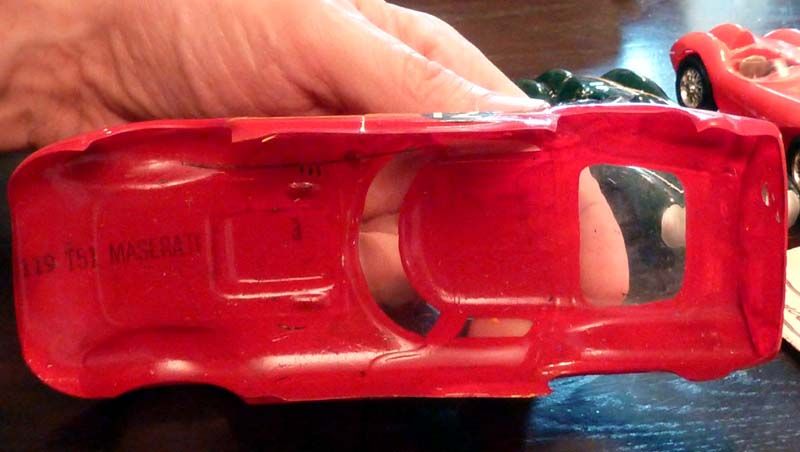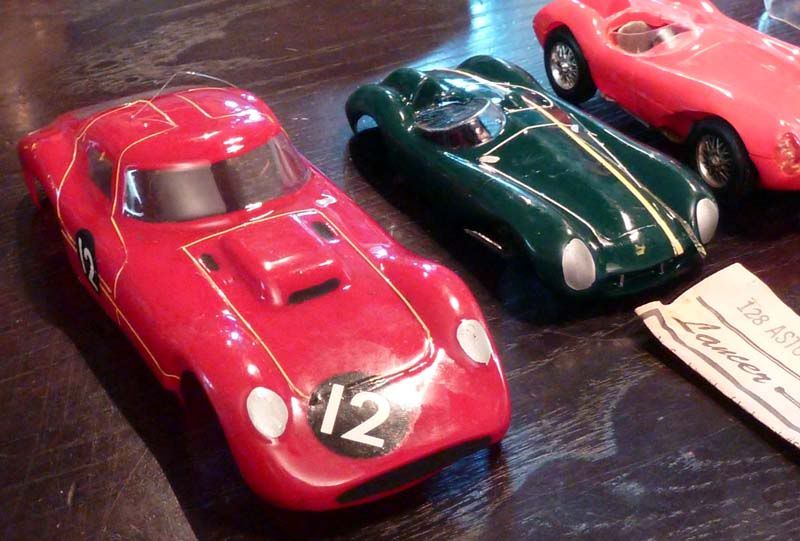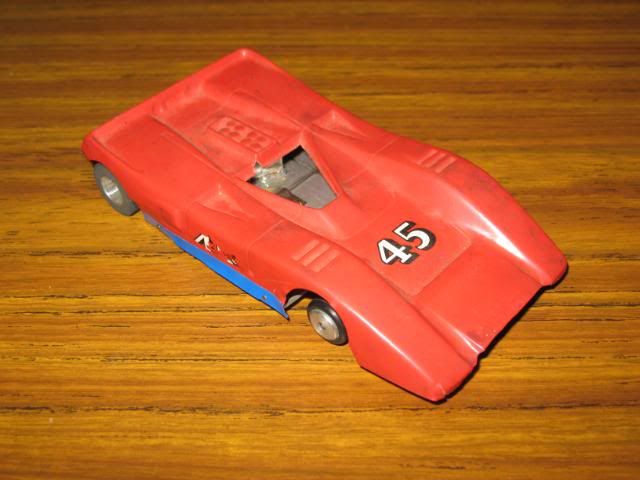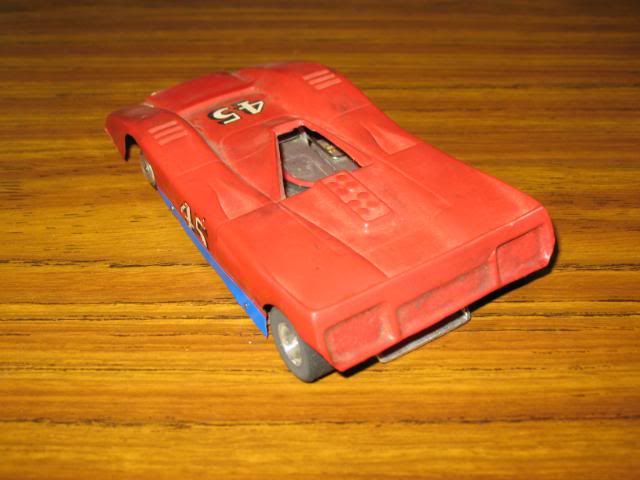There were also these strange Lancer pre-painted shells, brush-painted with yellow pin-striping... Did he remember those at all?
Yes, of course. These are early Lancer bodies that were hand-painted by a gentleman called John Carlson. Here is a quick quote from the new book:
To promote the product, Lancer had some "body boards" made in house for use by distributors and retailers. These were stackable and had the Lancer's vacuum-formed knight emblem painted in metallic bronze colors and mounted on the board, with an array of pre-painted and decaled bodies pinned to a soft background. John Carlson was one of the early employees, in charge of painting the bodies for the boards. These were not sprayed as they later were but hand-brushed. They received adhesive striping and water-slide number decals and were stamped on their inside with their name and stock number, once a numbering system had been devised.
We have now been able to assert that while the very first bodies were made of metallized plastic, very quickly that changed and the same bodies (a 1936 fender-less Ford roadster, a 1927 fender-less '27 T "lakester", a '34 Ford V8 coupe, and a Ferrari 156 "shark nose" were now produced in clear butyrate. While the early bodies are a bit crude, and indeed some were ripped from existing injected plastic models (the Connaught and Vanwall were lifted from the Merit plastic kits), it did not take long for Lloyd to refine his art and subsequent models became absolute wonders of forming precision and accuracy.
As an aparte, the 1963 Novi Indy car (the two-wheel drive model) was one of several molds that Lancer purchased from the bankruptcy of a former K&B vacuum forming plant, in which Asbury and Brunson were invited. Once there, they were offered to buy what they wanted. Lancer ended purchasing everything in the building, including screw machines and vacuum-forming machines, that were transferred to San Bernardino. But the employees of the K&B plant did not know what was going on and found the doors locked when going back to work over the weekend! A nasty way to find out that you lost your job...
Lloyd repaired and modified the purchased molds that joined the growing line of bodies, while a gentleman was hired to make work of the screw machines. He stayed with Lancer to the end, and now owns his own machine shop in Corona.
Don, the only other mold makers at Lancer were Lloyd's helpers, Dave Susan and a young man whose I have the name somewhere, but they were just doing the "slave work".
The numbering system begins in most Lancer sales literature at "85", but it really does not mean that 84 models were previously produced. As for many such companies, numbering often began at "101" or "1001" to give an impression of previous business and experience in the field, to reassure customers.
At the beginning, Lancer had no stock numbers, just names, and the bodies were not bagged or boxes, just loose with a paper tag taped or stuck inside them. The boxes came in 1966. There were three different styles of paper tags before that, and the boxes came in two different colors, the yellow ones used for the painted bodies, blue for the clear ones. Later, a metal foil label was stuck on the yellow boxes to indicate other lines, like the first Lexan bodies.
To destroy a legend that has been floating and that is patently false, no Lancer bodies were produced after Lloyd left in 1970, and no new models were ever created after that date. Brunson filled orders from existing stocks, eventually selling all remaining inventories to Associated Electrics, who tried unsuccessfully to sell them. Eventually, Gene Husting dumped the thousands of unsold bodies in a 40' dumpster and they joined the famous Irvine landfill where so many good things got buried over the years, that include a real Maserati 151 coupe AND one of the five Chaparral 1s!
The last models made by Lloyd at Lancer were that of a 1970 March-Chevrolet 707 Can-Am car and of the ill-fated 1969 Eagle "Mag" F1 car, that was rechristened "A Formula". A Ti22 was in the wings but was not completed at Lancer, instead became the base for the Kirby-Associated model as well as the MAC model with a shorter nose.
For a few months, Lloyd worked for Associated, creating the Kirby range in 1/24 and 1/32 scale, then moved to create a new company called M.A.C. with his friends Barry Crowe and John McGuyer.




























